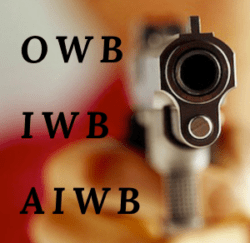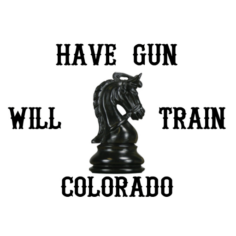 Draw from The holster, according to Karl Rehn, a well-known instructor in the Austin Texas area with KR Training “Is a skill very few instructors are certified to teach”. Presentation and draw from the holster is taught properly by very few instructors. Approximately one percent of all instructors are qualified to teach this skill. That’s only one out of a hundred certified to teach this important skill.
Draw from The holster, according to Karl Rehn, a well-known instructor in the Austin Texas area with KR Training “Is a skill very few instructors are certified to teach”. Presentation and draw from the holster is taught properly by very few instructors. Approximately one percent of all instructors are qualified to teach this skill. That’s only one out of a hundred certified to teach this important skill.
Personal Protection Outside The Home (PPOTH) is the only way certification can be gained from the NRA’s Instructor certification program. Draw from The holster is a skill that takes many hours of prerequisite training. This is the only NRA certification that actually certifies instructors for that particular task. Instructors that teach basic pistol from the NRA have not been trained in these skills, according to Karl in his new book “Strategies and Standards for Defensive Handgun Training.”
I see many people with improper or inappropriate holsters in my classes. The primary purpose of a holster is to allow access to a handgun while protecting the trigger and trigger guard, in addition, the handgun holster should have enough retention that if it is turned upside down the gun will be retained and not fall out of the holster. In addition, holsters that collapse and do not hold their shape can be very hazardous. Holsters that come with guns in the original box are usually not adequate concealed carry holsters.
Most people never learn a proper draw stroke
Many people never learn a proper and efficient draw from the holster. They end up with a version of something they saw on YouTube or some other place on the internet. With all these bad habits in place, accidents are a common event. Draw from the holster is a skill that must be honed and practiced with of course proper equipment. When you first start out, slow and correct positioning is the most important aspect. Speed comes from being smooth and smooth is fast enough. As with any technique, there are often several ways to do it. Some teach the five-step draw some teach a four-step procedure. Karl believes in teaching a ready position which is part of your draw stroke. That gives you a good index position for some close quarters training and shooting without full extension.
Get Some Professional Help
These shooting techniques should not be done without someone watching to make sure that you’re doing it safely and not being a hazard to others around you. Safety for both yourself and others is paramount and of course, safety rule number three must be followed at all times. Any failure to apply all the safety rules in this process can result in holes in your body that your creator did not put there when you were born. We are lucky here to have a range that allows drawing from the holster. The strongside belt holster technique is the only method allowed at our range. Any other type of draw is against the rules and has to be done with the supervision of an approved instructor.
One of my mentors Partick Watts, a Law Enforcement Firearms Instructor spent many hours with me honing my skills including the draw form the holster techniques that I use today.
Get that draw from the holster training that can make the difference. Contact me today to set a time for us to hone your draw from the holster skills and make you a better and safer concealed carry practitioner.
Other articles of Interest to Readers:
